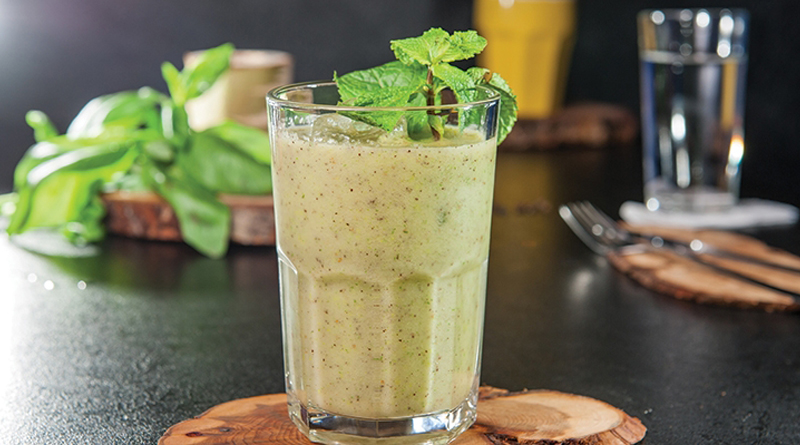Personalization and fragmentation are two of the biggest drivers of change in the food and health business.
It’s been 20 years since the first “functional food” burst onto the American market, with the debut of rival spreads Benecol from Raisio, and Flora from Unilever, each boasting their clinically proven ability to lower cholesterol by 12% thanks to their active ingredient, plant sterol esters.
But consumers don’t go shopping with a list that says “yogurt, bananas, apples, functional foods.” Since 1998 people have shown they want regular food that confers some health benefit, seems natural, is easy to understand, and relates to their own needs.
That’s why probiotic yogurt was the only real winner from the “functional foods” frenzy of 1998-2007; the presence of bugs that are good for you in yogurt, which people knew contained “live and active cultures,” seemed logical.
Omega-3 fish oil fortified bread, milk with glucosamine for joint health, milk with melatonin, smoothies with cholesterol-lowering plant sterols—these and hundreds of others seemed too medical or just weird to the average person and have disappeared, or linger in niches.
Where the “science-added” strategy remains, it’s largely as a deliberate niche venture, such as the recent launch by Australia’s biggest breakfast cereal maker of Weet-Bix Cholesterol-Lowering—cereal with plant sterols—a new variant aiming to capture more value for a parent brand which, like so many, has seen sinking sales.
Change Drivers
Back in 1998 no one foresaw that personalization and fragmentation would become two of the biggest drivers of change in the business of food and health. Together they are creating a wealth of opportunities and simultaneously giving strategists a headache over how to handle an ever-more-diverse marketplace.
Personalization is all about consumers taking back control of what they buy, eat and do. People want to feel empowered and confident to create their own diet and health choices. The roots of this change lie in technology and in changing dietary advice.
It isn’t surprising that consumers think dietary advice often flips 180 degrees. Today eggs are promoted for their protein and other nutrients, but 20 years ago they were demonized by dietitians for their cholesterol content.
Butter was demonized for 50 years, but now we know that in moderation it poses no risk to cardiovascular health; it is also “more natural” and less processed than the margarines we were told to eat in its place.
Unsurprisingly, 76% of Americans think the messages about food and health are confusing, according to findings from the International Food Information Council (IFIC) 2017 Food & Health Survey of Americans.
As a result, people are going online, doing their own research and crafting their own personalized eating style that they believe matches their needs as individuals.
The Internet has beaten the experts; almost three times as many people would turn to the Internet for information as any other source. When IFIC asked people where they look for information if they want toknow more about healthy foods and diet, 46.5% of consumers said they would “search online and read blogs” compared to only 18% that would “ask a nutritionist/dietitian.”
For about half the population, the idea that each of us is unique and therefore has unique nutritional and metabolic needs is becoming an accepted fact.
We’re in the era of lifestyle personalization. People’s ideas about food and health have become an increasingly large and complex menu from which they feel they can select and then modify their choices, or completely change them as new information becomes available.
Science-based personalization is still in its embryonic phase. Consumers are experimenting with DNA testing, with analysis at its highest among sports and fitness enthusiasts. These people are the early adopters whose restless quest to optimize their performance and their health makes them the canary in the coal mine of the nutrition business. They have already driven the rise of protein, vegetable protein, and low carb-high fat diets, such as that made popular by three-time Tour de France winner Chris Froome. Given time, they will drive the mainstreaming of personalization.
Markets are fragmenting and it has become increasingly difficult, and rare, to establish high volume mass-scale brands. IRI data bears out how this has become true across the food and beverage industry. For example, IRI data shows: in 2014, 63% of new brands earned more than $20 million in first year sales, but by 2016 that number had plunged, with only 33% of new products earning more than $20 million in first year sales.
Smaller niches are arising that give opportunities both for startups and fleet-footed established players willing to cater to the proliferating array of consumer beliefs.
Digestive Wellness
Consumers’ quest for digestive wellness remains a big driver of new opportunities for businesses large and small. The rise of probiotic dairy, gluten-free and lactose-free dairy, and plant milk is all driven by people looking to avoid digestive upsets.
Like every other area, digestive health is fragmenting, with people willing to consider more ingredients, more types of avoidance, and more product categories.
Prebiotics should be one of the stars of the digestive market. They are science-based and have secured a rare regulator-approved health claim in Europe.
But the word “prebiotic” is largely unknown to consumers, and they often confuse it with probiotic. Savvy companies tend to use the prebiotic ingredient for the effect, but add another ingredient, such as kiwifruit, fig or beetroot, that signifies digestive wellness to the consumer. A good example can be found in Portugal, where juice market leader Compal uses kiwifruit, with its strong digestive health association in people’s minds, as the “star” ingredient for its digestive health juice shot, with added inulin for digestive claims.
Probiotics continue to be a selling point in dairy, but the opportunity has pivoted to other product types, driven by the buzz online and in the media about fermented foods. Rising consumer interest in fermented foods is partly driven by the fact that we are all food explorers now, open to trying new foods, drinks, tastes and cuisines that would have been unknown to our grandparents or even our parents.
Source: Nutraceuticals world








